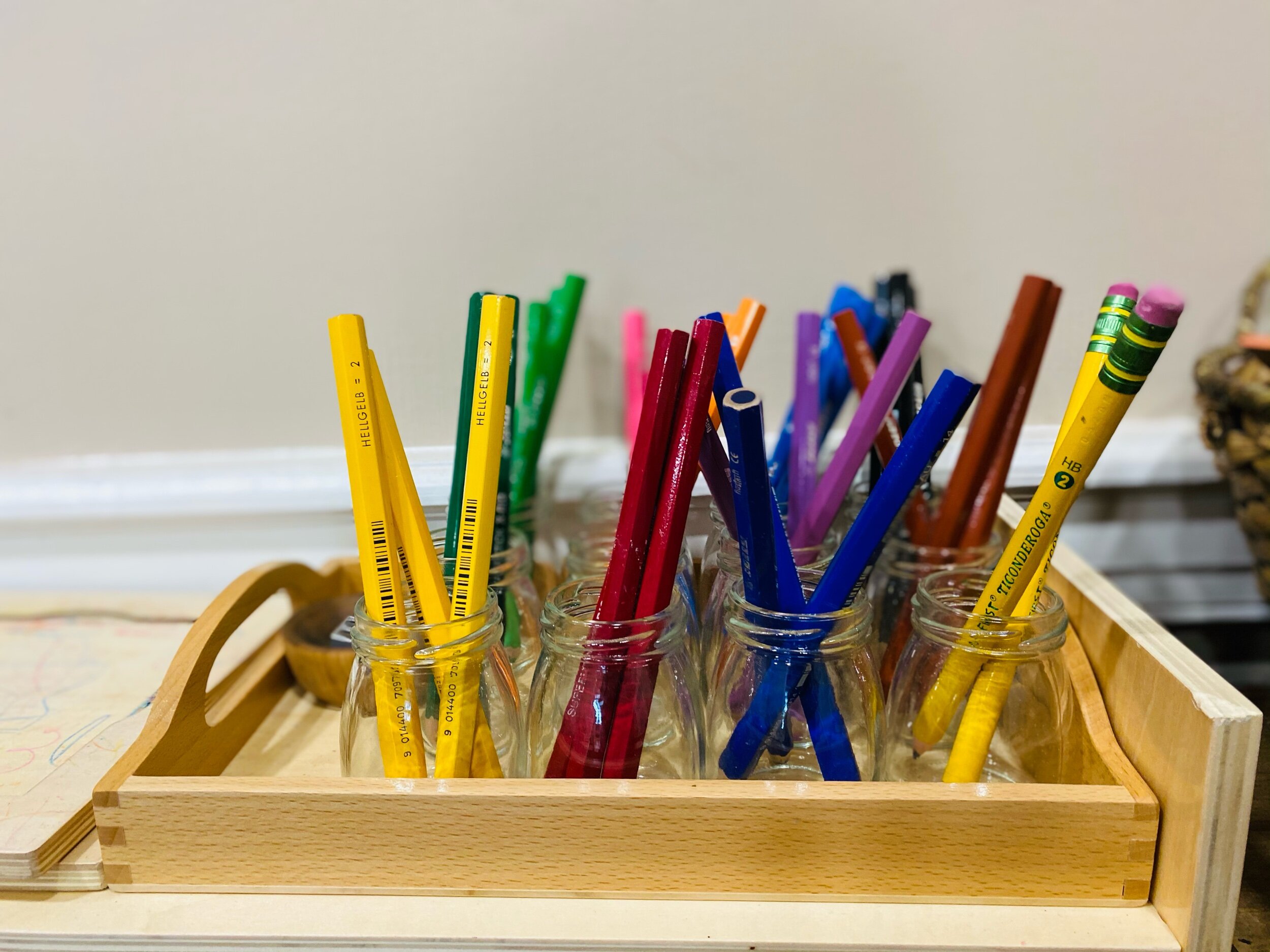Our Classrooms
Our Montessori Classrooms
To fully understand the beauty of a Montessori classroom, you need only step into one. Each classroom is specifically designed for the child, as envisioned by Maria Montessori. The classrooms are beautiful and inviting. Natural light, calming colors, and uncluttered shelves and work spaces, inspire the child to begin meaningful and rewarding exploration.
The prepared environment is a signature of Dr. Montessori’s approach. The classroom is arranged in such a manner that each part of the curriculum has its own, well-defined space. The distinctive learning materials are situated on shelves that are easily accessible by the child, and are arranged from left to right (the direction in which we read) in order of concrete thought to the more abstract. Each material teaches a concept or skill that must be mastered before moving on to the next.
Our classrooms are spacious to allow for group activity and accommodate the student involved in large works. Children work at appropriately sized tables or on the floor with special floor mats which define their work spaces.
Our classrooms provide a dedicated space for peace. Usually a table in quiet corner, adorned with a thoughtfully chosen item such as fresh cut flowers or a goldfish bowl…this space acts as a place to quiet the mind, for reflection, or meditative thought.
Multi-Age Learning Environment
One of the hallmarks of the Montessori philosophy is multi-age groupings. The classroom is typically composed of students in a 3-year age grouping. By design, the students remain with the class and the teacher for the entire three years. A community full of meaningful bonds between students and the teachers are formed.
It is common to see students of different ages working together. It is a joy to watch the children as they go through their day being helpful and kind to one another. The older children in the classroom take pride in being leaders in the class. They reinforce their own lessons by teaching academic concepts they have already mastered, serving as mentors in the classroom, and become role models for the younger children. The younger children receive cues on how to behave, how to choose work, and how to interact with the others from their older mentors.
This arrangement, while it may seem foreign in a traditional sense, is actually more like the real world where individuals of all ages and personalities work and socialize together.



